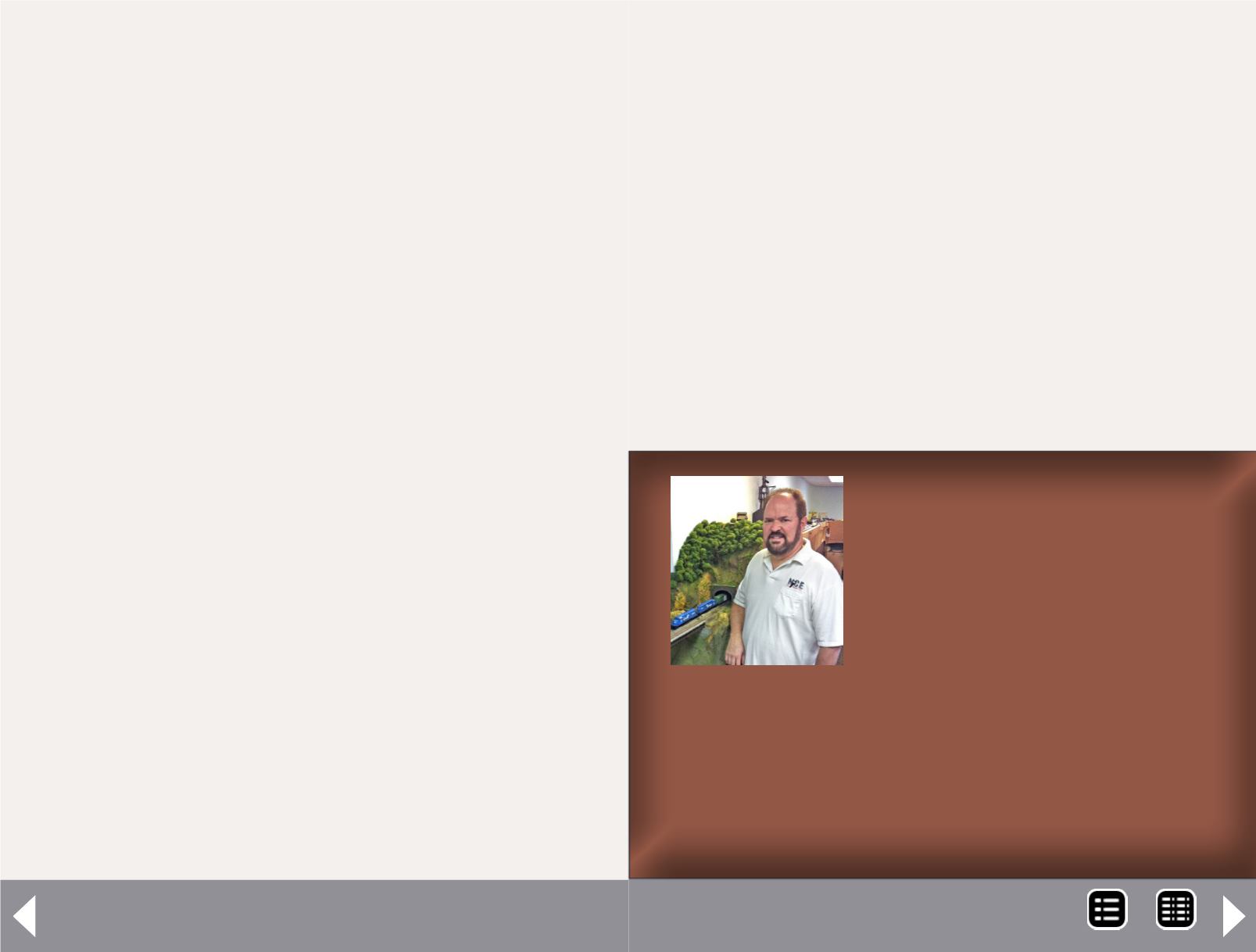
Around the Room Layout Entrance - 5
To account for vertical alignment of the track at both the
hinged and open ends of the gate, I used wood screws when
fastening the three inches of Homasote roadbed on both sides
of the rail gaps (4). The balance of the Homasote roadbed is
glued to the plywood sub-roadbed. Adding (or subtracting)
cardboard or paper shims between the Homasote and plywood
permits very small vertical adjustments.
After 25 years, I have still not found a need to adjust the hinged
end of the gate. These tracks align very reliably both winter
and summer.
On the open end of the gate, I remove shims in the early sum-
mer as humidity causes the wooden structure to expand
slightly. As the wood dries out in the fall, the shims are put
back in place, raising the railhead to match the fixed part of
the layout. Other than the twice a year vertical adjustment, no
other adjustment has been necessary.
By placing a continuous strip of the Homasote road bed across
the entire gate area, I made sure everything started life in per-
fect alignment. I used a razor saw to cut the Homasote so there
is a close fit for the roadbed.
After checking for smooth operation with the roadbed in place,
I added the track. I used code 83 flex track for my HO layout,
but you can use any track used on the adjoining fixed portions
of your layout. I again used the razor saw to cut the gaps on
the hinged and open ends of the gate. I then filed small cham-
fers in the ends of the rails to ease wheel sets across the gaps.
Building the roadbed and trackwork across the entire gate
area, before cutting them, ensured that everything lined up.
The cam action design for the gate allows the gap between the
moving and fixed parts of the gate to increase as it opens, mov-
ing the vulnerable rail ends away from each other (8, 9). This
Bob Bucklew began his modeling
career at age 8 with a Lionel train set
from his uncle. Though the Lionel was
traded for HO scale, the pleasure of
model railroading has remained.
Bob got serious with model railroad-
ing while working for Excelsior Truck
Leasing, a Penn Central and later
Conrail subsidiary.
His current layout was begun almost 30 years ago, an HO
scale free-lanced Quaker Valley Railroad set in western
Pennsylvania in 1977. It employs a JMRI CTC panel to control
the NCE layout. He recently authored an online tutorial on
construction of the panels using JMRI software.
Bob and his wife, Lynda, live near Reading, PA.
feature allows me to have a double track scenicked gate with
no interference.
The cam action also provides a solid stop when the gate
is closed. Most times I don’t even find a lock necessary to
secure the gate in the closed position. I did add a common
brass gate lock to the front edge of the gate, as shown. I con-
sidered replacing it with an electronic door latch to permit
the dispatcher to control access. In 25 years, we have not had
an accidental opening of the bridge under a train.
Power to the rails on either side of the aisle is straightforward.
I routed this power up through the wall and across the sus-
pended ceiling to make both sides part of the same electrical
block. I then ran wires to the four rails on the bridge, and have
them crossing to the fixed part of the layout almost parallel
MRH-Feb 2013


